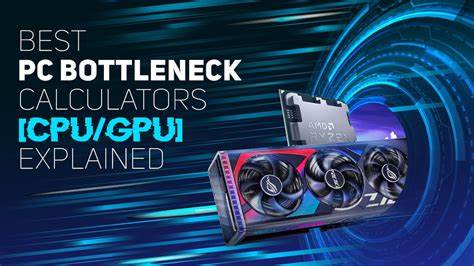
In the world of PC gaming and high-performance computing, ensuring that all components work seamlessly together is crucial for achieving optimal performance. Two key aspects of this are graphics card compatibility and CPU bottlenecking. This article explores both concepts in detail, helping you make informed decisions when building or upgrading your PC.
Graphics Card Compatibility
1. What is Graphics Card Compatibility?
Graphics card compatibility refers to the ability of a graphics card (GPU) to function properly with other components of a computer system, such as the motherboard, power supply, and CPU. Compatibility issues can lead to suboptimal performance or even hardware failures. Understanding the key factors affecting compatibility can help you avoid potential problems.
2. Key Factors Affecting Compatibility
- Motherboard Interface: Modern GPUs typically use the PCIe (Peripheral Component Interconnect Express) interface. Ensure that your motherboard has a compatible PCIe slot (usually PCIe x16) and that it supports the version of PCIe your GPU requires (e.g., PCIe 3.0 or PCIe 4.0).
- Power Supply Requirements: Graphics cards have specific power requirements that must be met by the power supply unit (PSU). Check the GPU’s power connectors and ensure your PSU has the necessary connectors and wattage to support the GPU.
- Physical Size: High-end GPUs can be quite large. Verify that your PC case has enough space to accommodate the GPU, considering both length and width. Some GPUs may also require additional clearance for airflow.
- CPU Compatibility: While not a direct factor of physical compatibility, your CPU should be powerful enough to keep up with your GPU to avoid performance bottlenecks. This is where CPU bottleneck calculators come into play.
CPU Bottleneck Calculators
1. What is a CPU Bottleneck?
A CPU bottleneck occurs when the central processing unit (CPU) limits the performance of other components, particularly the GPU. In gaming and computing, this means that the CPU is not able to keep up with the GPU’s performance, leading to reduced overall system performance and less efficient use of the GPU’s capabilities.
2. How Does a Bottleneck Calculator Help?
A CPU bottleneck calculator helps you determine whether your CPU is likely to limit the performance of your GPU in a given setup. These calculators take into account various factors, including the specifications of your CPU and GPU, and estimate the potential for bottlenecking.
3. How to Use a Bottleneck Calculator
- Input Specifications: Enter the specifications of your CPU and GPU into the calculator. Some calculators also allow you to input other components like RAM and storage.
- Analyze Results: The calculator will provide you with an estimate of whether your CPU will bottleneck your GPU. It may offer recommendations for CPU upgrades or suggest adjustments to achieve a more balanced system.
- Consider Real-World Performance: While bottleneck calculators provide useful estimates, real-world performance can vary. Factors such as system cooling, overclocking, and software optimization also play a role in overall performance.
Conclusion
Graphics card compatibility and CPU bottlenecking are critical considerations when building or upgrading a PC. Ensuring that your GPU is compatible with your motherboard and power supply, and using a CPU bottleneck calculator to assess whether your CPU will limit your GPU’s performance, can help you achieve a balanced and high-performing system. By paying attention to these factors, you can avoid common pitfalls and enjoy a smoother computing experience.
Whether you’re a gamer, content creator, or professional working with demanding applications, understanding these concepts will empower you to make informed choices and build a system that meets your performance needs.
Be the first to comment